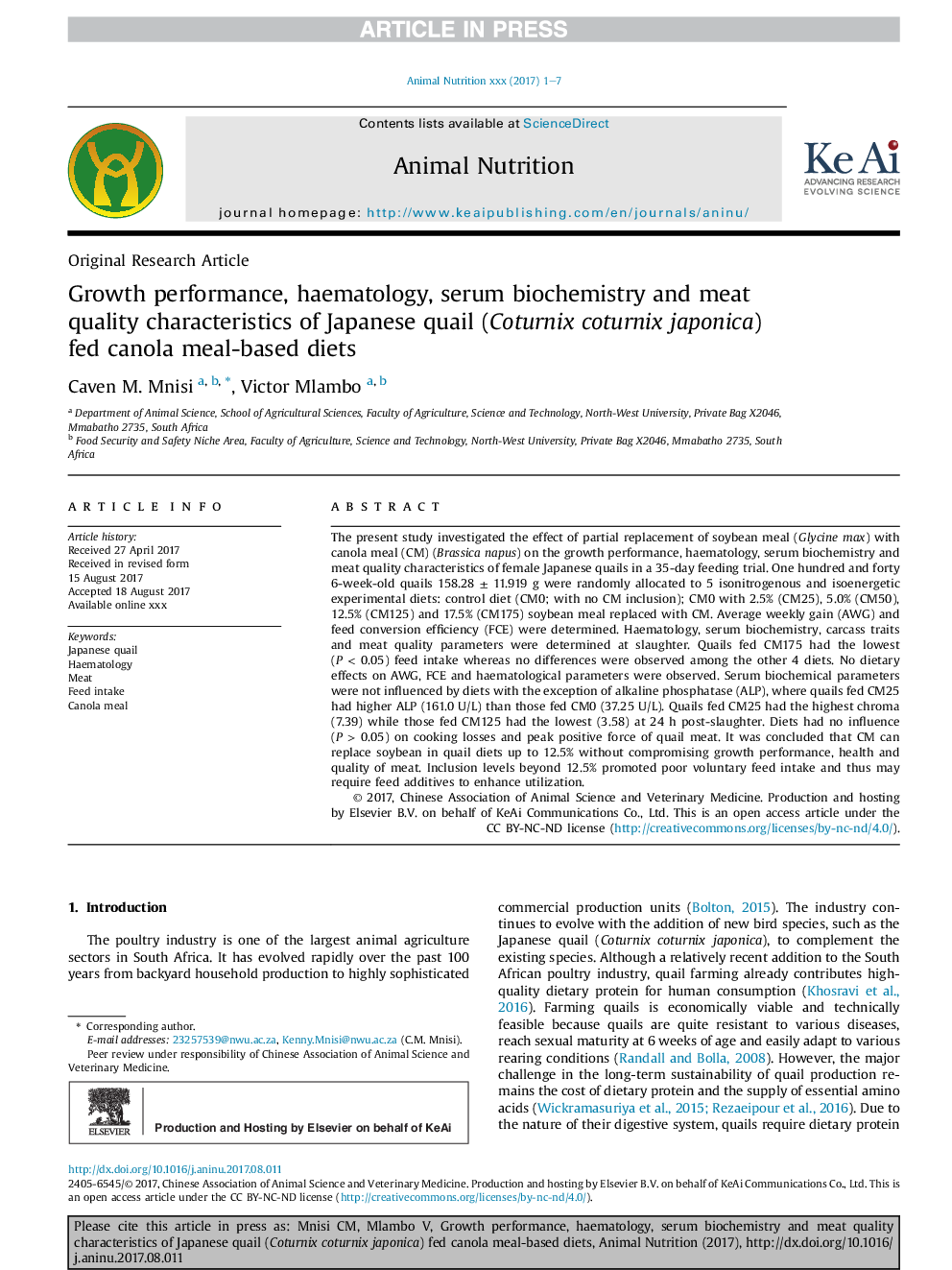| کد مقاله | کد نشریه | سال انتشار | مقاله انگلیسی | نسخه تمام متن |
|---|---|---|---|---|
| 8882522 | 1625233 | 2018 | 7 صفحه PDF | دانلود رایگان |
عنوان انگلیسی مقاله ISI
Growth performance, haematology, serum biochemistry and meat quality characteristics of Japanese quail (Coturnix coturnix japonica) fed canola meal-based diets
دانلود مقاله + سفارش ترجمه
دانلود مقاله ISI انگلیسی
رایگان برای ایرانیان
کلمات کلیدی
موضوعات مرتبط
علوم زیستی و بیوفناوری
علوم کشاورزی و بیولوژیک
علوم دامی و جانورشناسی
پیش نمایش صفحه اول مقاله

چکیده انگلیسی
The present study investigated the effect of partial replacement of soybean meal (Glycine max) with canola meal (CM) (Brassica napus) on the growth performance, haematology, serum biochemistry and meat quality characteristics of female Japanese quails in a 35-day feeding trial. One hundred and forty 6-week-old quails 158.28 ± 11.919 g were randomly allocated to 5 isonitrogenous and isoenergetic experimental diets: control diet (CM0; with no CM inclusion); CM0 with 2.5% (CM25), 5.0% (CM50), 12.5% (CM125) and 17.5% (CM175) soybean meal replaced with CM. Average weekly gain (AWG) and feed conversion efficiency (FCE) were determined. Haematology, serum biochemistry, carcass traits and meat quality parameters were determined at slaughter. Quails fed CM175 had the lowest (P < 0.05) feed intake whereas no differences were observed among the other 4 diets. No dietary effects on AWG, FCE and haematological parameters were observed. Serum biochemical parameters were not influenced by diets with the exception of alkaline phosphatase (ALP), where quails fed CM25 had higher ALP (161.0 U/L) than those fed CM0 (37.25 U/L). Quails fed CM25 had the highest chroma (7.39) while those fed CM125 had the lowest (3.58) at 24 h post-slaughter. Diets had no influence (P > 0.05) on cooking losses and peak positive force of quail meat. It was concluded that CM can replace soybean in quail diets up to 12.5% without compromising growth performance, health and quality of meat. Inclusion levels beyond 12.5% promoted poor voluntary feed intake and thus may require feed additives to enhance utilization.
ناشر
Database: Elsevier - ScienceDirect (ساینس دایرکت)
Journal: Animal Nutrition - Volume 4, Issue 1, March 2018, Pages 37-43
Journal: Animal Nutrition - Volume 4, Issue 1, March 2018, Pages 37-43
نویسندگان
Caven M. Mnisi, Victor Mlambo,